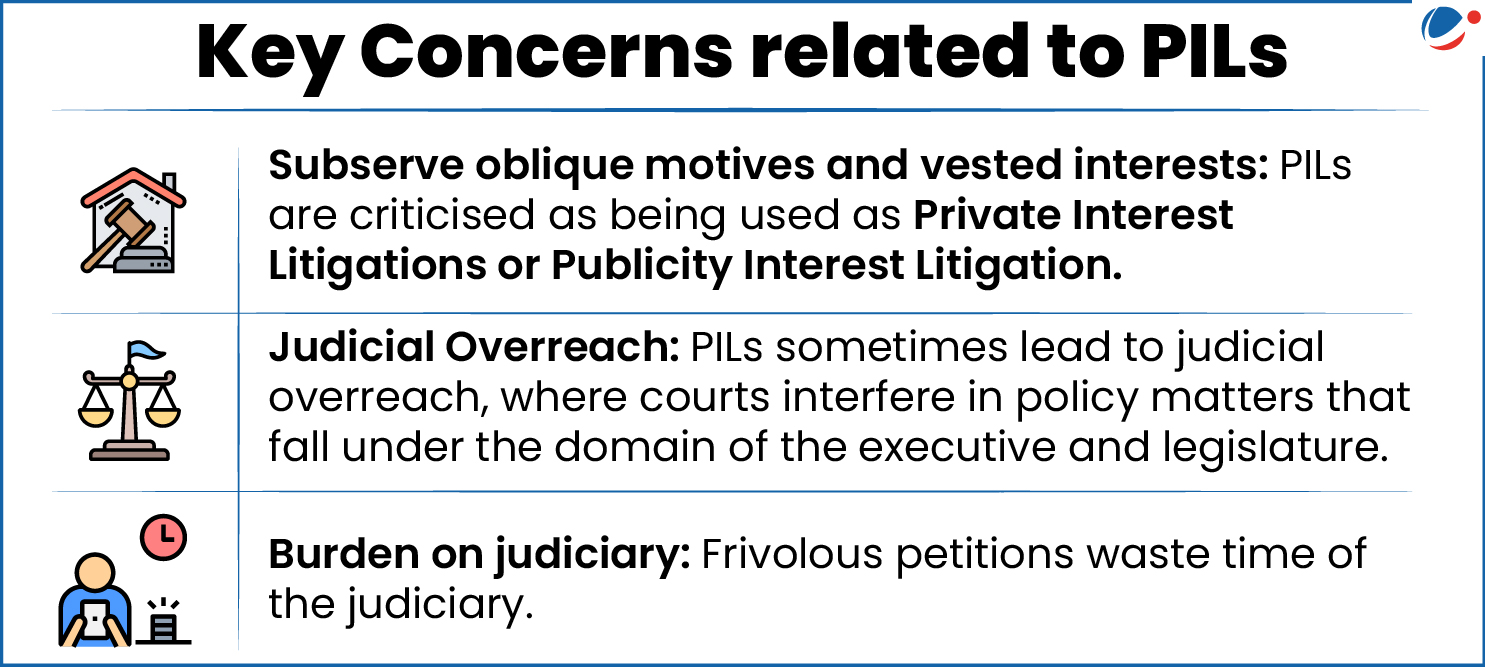Judge highlighted that misuse of PILs has been impacting its efficacy as a tool for social justice.
About Public interest Litigation (PIL)
- Definition: It refers to the litigations, filed by a party without any ‘locus standi’ (i.e., the party who is not aggrieved), to protect the general public interest.
- Key Features:
- It is also known by names such as Social Interest Litigation. And, the idea is borrowed from American jurisprudence.
- It is not defined in any statute/ act. It is the power given to the public by courts through judicial activism.
- The Supreme Court and the High Courts have the right to admit PILs under Articles 32 and 226, respectively.
- Genesis:
- In ‘Mumbai Kamgar Sabha v. Abdulbhai Faizullabhai (1976), the SC relaxed the principle of Locus Standi for the first time.
- Hussainara Khatoon vs. State of Bihar (1979) was first reported case of PIL.
- Justice P N Bhagwati and Justice V R Krishna Iyer were among the first judges to admit PILs.
- Former is considered as the father of public interest litigation in India
- Tool of Social Justice: PILs led to landmark judgements like Triple talaq case, opening Haji Ali shrines to women, legalised consensual homosexual relations, etc.






